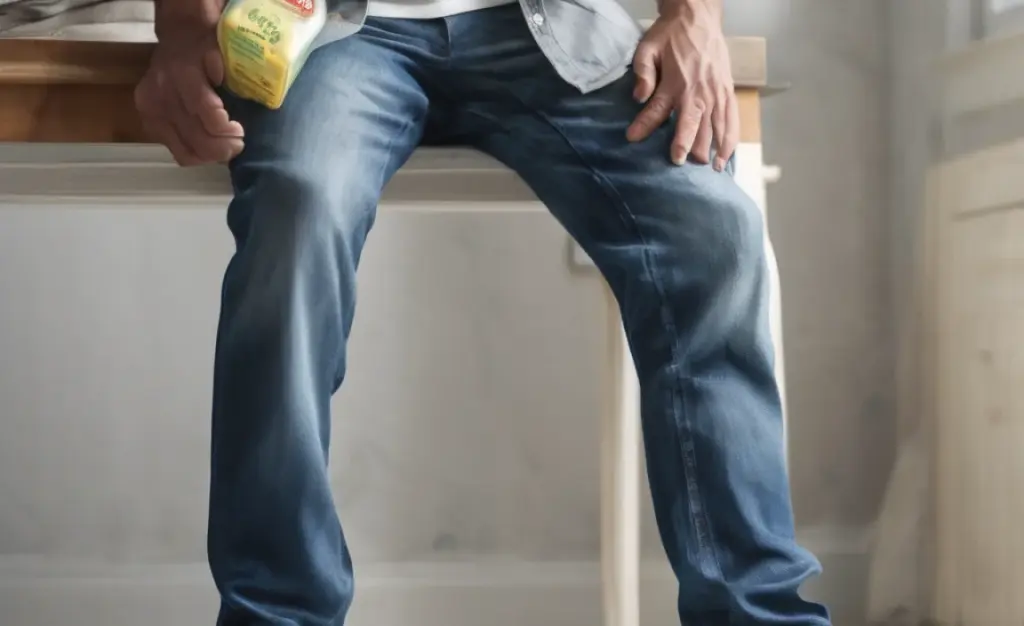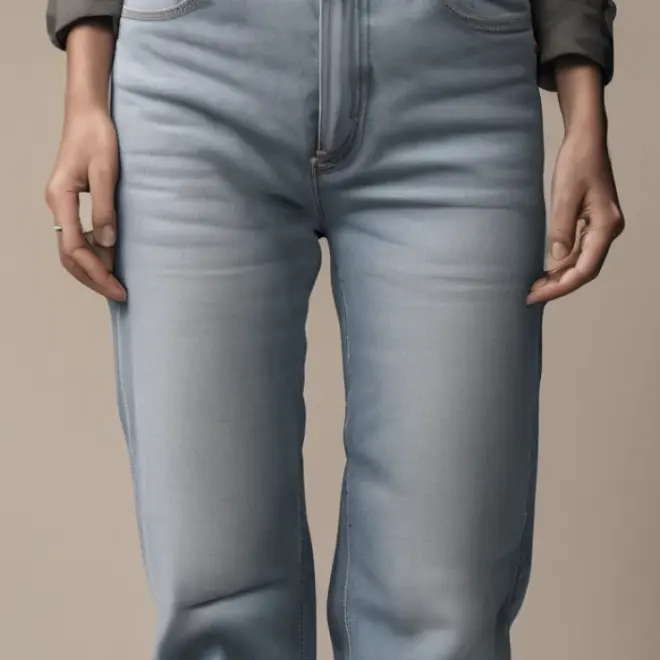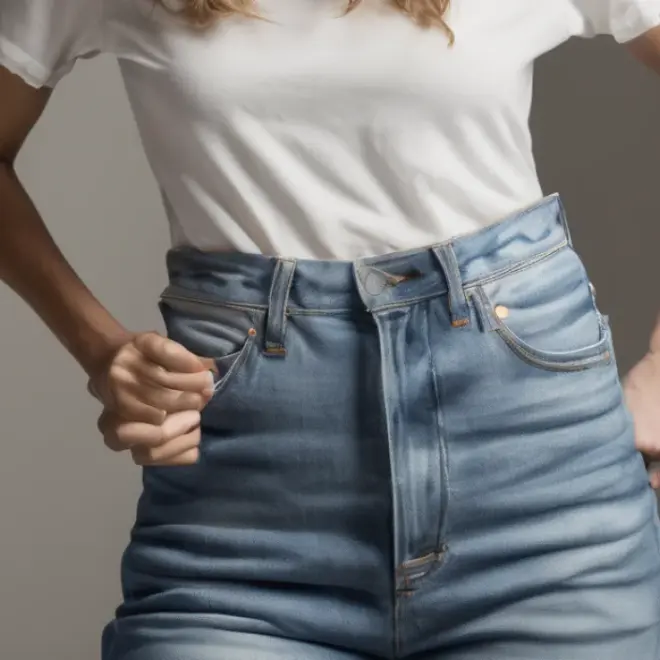Quick Summary: Easily hem your dad jeans using a simple dish soap trick. This no-sew method creates a clean, temporary hem that looks great and is surprisingly durable, perfect for adjusting length without cutting or sewing.
How to Hem Dad Jeans: The Proven Dish Soap Trick for a Quick Fix
Tired of your favorite dad jeans dragging on the floor? It’s a common style problem, but thankfully, you don’t need a sewing machine to fix it. We’ve all been there, staring at jeans that are just a little too long, making us look a bit sloppy. This guide will show you a surprisingly effective and easy way to get that perfect length using items you likely already have in your kitchen: dish soap!
Forget complicated tailoring or risky cutting. This method is all about a clever trick that uses a common household item to create a crisp, reliable temporary hem. It’s perfect for a quick style adjustment, especially when you want to wear your dad jeans with different shoes. Stick around, and I’ll walk you through every simple step to achieve a great-looking hem in minutes.
Why Dad Jeans Need the Right Hem
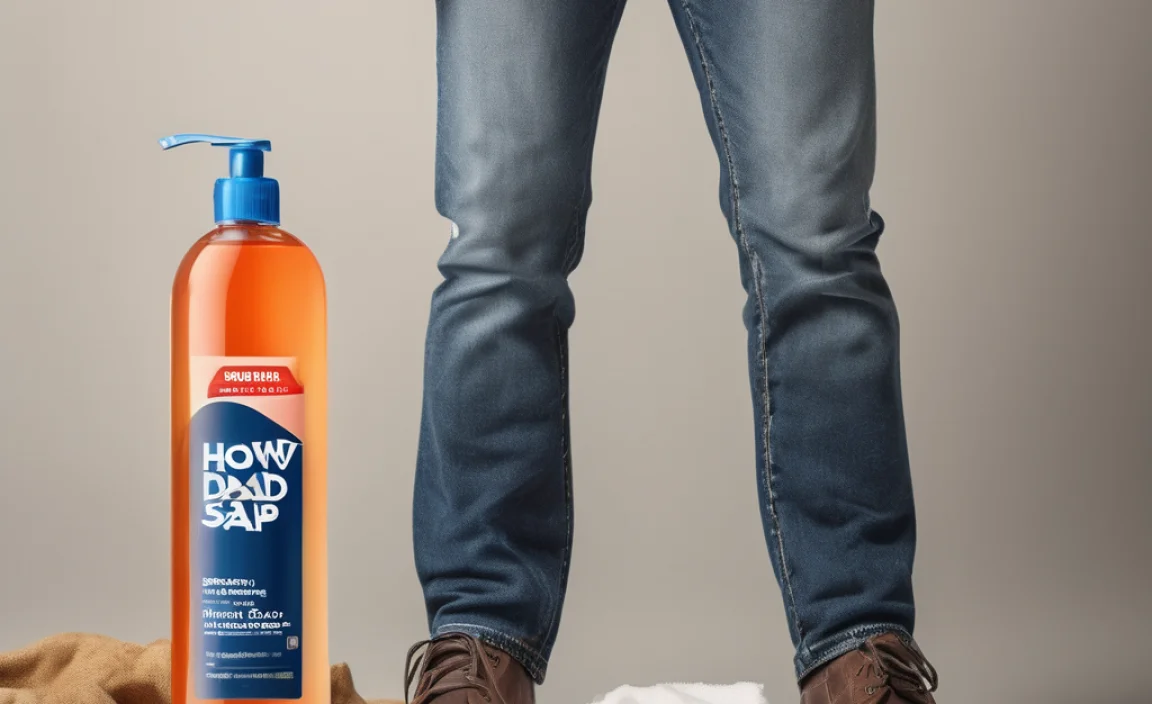
Dad jeans, with their relaxed fit and often higher rise, are a fantastic style staple. They offer comfort and a cool, retro vibe. However, their very design can lead to an inconvenient length issue. When dad jeans are too long, they can bunch around your ankles, making your outfit look messy and sometimes even shortening your perceived leg length. Getting the hem right is crucial for them to look their best and for you to feel confident.
A proper hemline can also affect how your shoes are showcased. Too long and they can cover your footwear; too short and they can look awkward. The dish soap trick offers a fantastic solution for achieving a good length without permanent alterations, giving you flexibility and control over your look. It’s a hack that’s both practical and surprisingly effective.
The Dish Soap Secret: How It Works
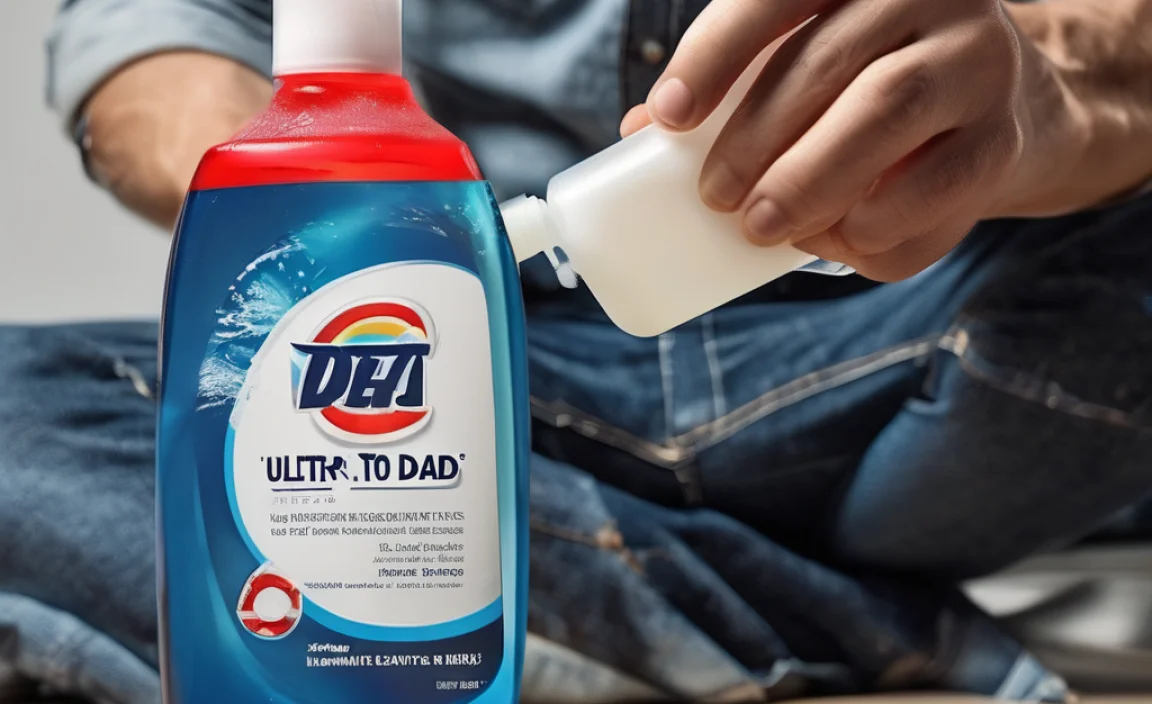
You might be wondering how a common kitchen staple like dish soap can help hem your jeans. The magic lies in its surfactants. Surfactants are molecules that reduce the surface tension of water, allowing it to spread more easily. When applied to fabric and then combined with water, dish soap can temporarily help to crease and set fabric fibers. This is similar, in principle, to how some fabric stiffeners or temporary fabric glues work, but on a much gentler, more temporary scale.
When you dampen a folded edge of your denim with a diluted dish soap solution, the liquid helps the fabric fibers to hold a crease. As the natural denim fibers dry, they retain this creased shape. This process essentially “teaches” the fabric to stay folded precisely where you want it, creating a stable hem without any stitching. It’s a simple chemical reaction harnessed for a practical fashion fix.
Gather Your Simple Supplies
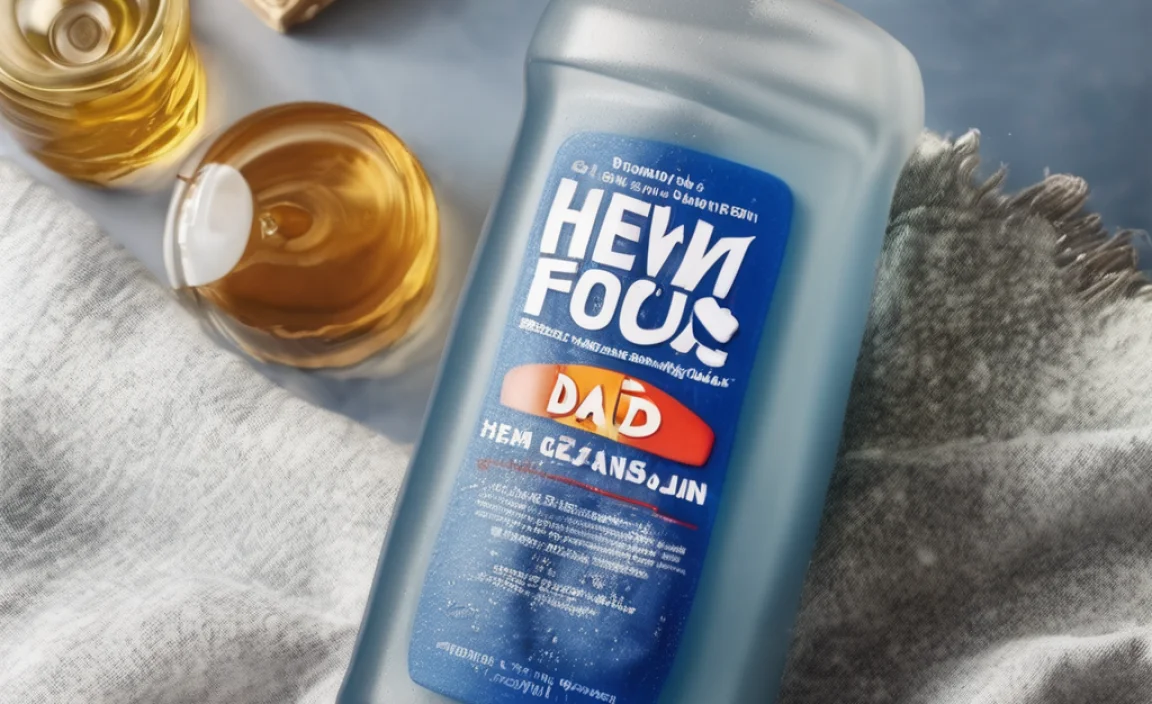
One of the best things about this hemming method is how accessible the supplies are. You probably have everything you need right now. Let’s make sure you’re prepared before we start.
- Your Dad Jeans: The star of the show! Make sure they are clean.
- Liquid Dish Soap: Any brand will do. The clearer the soap, the less chance of accidental color transfer, though most are dye-free or have minimal dyes.
- Water: Regular tap water is perfectly fine.
- A Small Bowl or Cup: For mixing the solution.
- A Measuring Tool: A ruler, measuring tape, or even a piece of paper folded to a consistent width can work.
- A Pen or Fabric Marker (Optional but Recommended): To mark your desired hemline.
- A Spray Bottle (Optional): For even application of the liquid.
- A Clean Towel or Paper Towels: For any drips.
Step-by-Step: The Dish Soap Hemming Process
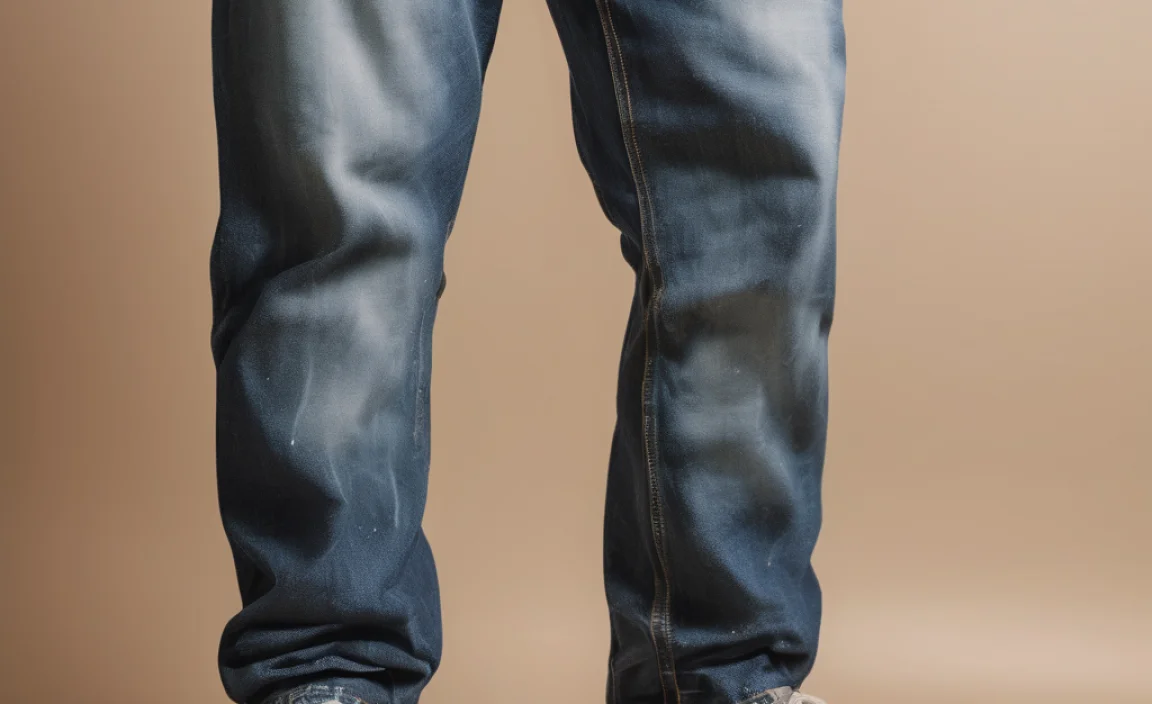
Ready to give your dad jeans the perfect length? Follow these straightforward steps. It’s easier than you think!
-
Determine Your Desired Length
First, put on the shoes you plan to wear most often with these jeans. Stand in front of a mirror. Decide where you want the bottom of your jeans to hit. Do you want them to just graze the top of your shoes, or sit a bit higher? Use your measuring tool to measure from the inseam (the seam running up the inside of your leg) to your desired length. Alternatively, measure from the crotch seam down.
-
Mark the Hemline (Optional but Helpful)
Once you know where you want the hem, you can mark it. While wearing the jeans, use your fabric marker or pen to make small dots on the inside of the leg at your desired length. If you prefer not to mark directly on the jeans, you can also use a contrasting thread at this point, or simply remember the spot.
-
Prepare the Dish Soap Solution
In your small bowl or cup, mix one part liquid dish soap with about four parts water. For example, if you use 1 tablespoon of dish soap, add 4 tablespoons of water. Stir gently to combine. You don’t need a lot of suds; a slightly milky liquid is what you’re aiming for. You can also just wet a sponge or cloth with this mixture.
-
Apply the Solution to the Hem Area
Take off the jeans. Lay them flat. Using your finger, a sponge, or a spray bottle filled with the solution, carefully apply the dish soap mixture to the area of the denim where you want the new hem to be. You want to dampen the fabric thoroughly about 1 to 2 inches above where the final folded hem will sit. This dampening is what allows the crease to form and set.
-
Fold and Crease the Jeans
Now, fold the bottom of each jean leg up to meet your desired hemline. If you marked the jeans, fold them up so the bottom edge aligns with your mark. Press down firmly on the folded edge to create a sharp crease. Ensure the fold is even all the way around the leg. You might want to smooth it out with your hands. This is where you’re setting the shape.
-
Reinforce the Crease with More Solution
Once the fold is in place, apply a little more of the diluted dish soap solution along the folded edge. Again, you want to dampen the fabric. This helps to set the crease you just made. You can use your fingers to press the fold firmly one more time, really pushing the fabric to hold its new shape.
-
Let Them Dry Completely
This is the most crucial step for the hem to hold. Hang your jeans or lay them flat in a well-ventilated area to dry completely. Avoid using a dryer on high heat, as this might cause the crease to relax too quickly. Allow them to air dry naturally. This could take several hours, depending on your climate and how damp they are.
-
Check the Hem
Once your jeans are fully dry, put them on again with your chosen shoes. The hem should now hold its shape, giving you the perfect length. If the hem isn’t quite as crisp as you’d like, you can repeat steps 4 through 7, reinforcing the crease a bit more firmly.
Pro Tips for a Perfect Dish Soap Hem
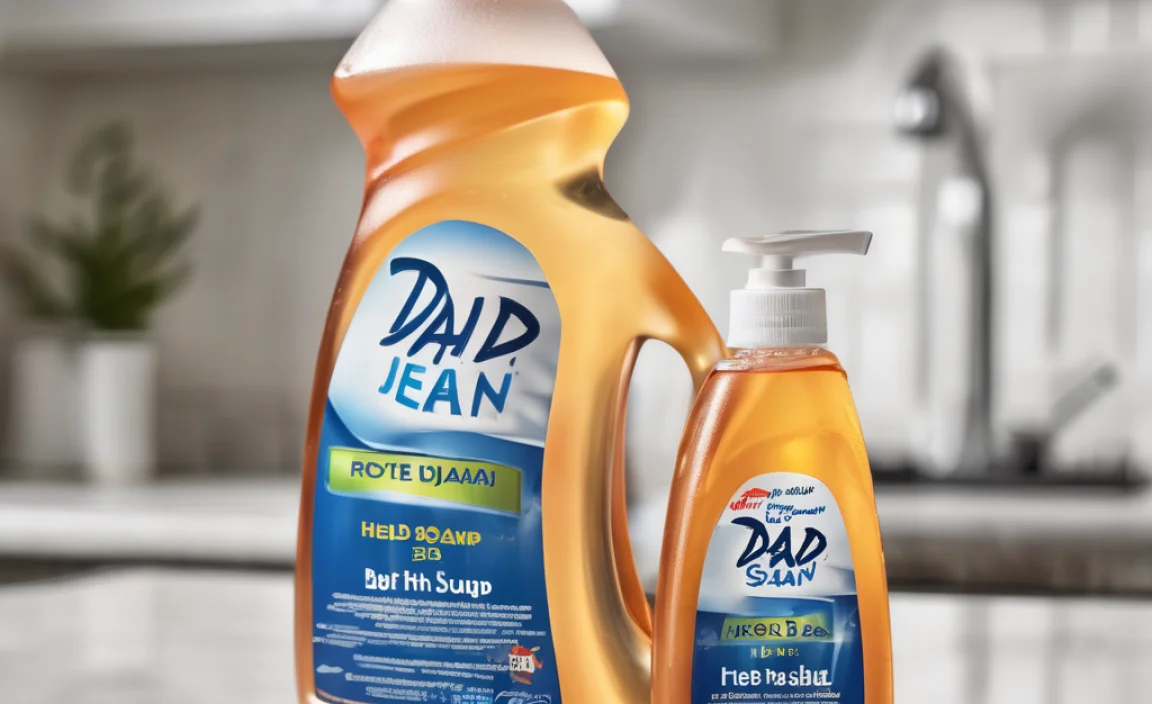
To ensure your dish soap hem looks its best and lasts, here are a few extra tips from my experience:
- Consistency is Key: When measuring and folding, try to be as consistent as possible on both legs. Uneven hems can be noticeable.
- Ironing for Sharpness (Optional): If you want an extra sharp crease, and your jeans can tolerate it (check the care label!), you can very carefully iron over the folded hem after it has partially dried. Use a medium heat setting with no steam, and an ironing cloth or thin towel between the iron and the denim to protect the fabric. Make sure the fabric is still slightly damp, not wet.
- Dealing with Thicker Denim: For very thick denim, you might need to apply a bit more solution or press harder when creasing.
- Temporary Nature: Remember this is generally a temporary fix. Washing your jeans will likely relax the crease over time. However, many users find the hem holds remarkably well through a few wears and light washes. For a more permanent solution, consider traditional hemming methods.
- Practice Makes Perfect: Your first attempt might not be absolutely flawless, and that’s okay! Each time you try this, you’ll get better at achieving the crispness and drape you desire.
Pros and Cons of the Dish Soap Hem Method
Like any clothing hack, this method has its advantages and disadvantages. Understanding them will help you decide if it’s the right solution for your needs.
| Pros | Cons |
|---|---|
| Fast & Easy: Requires no sewing skills or special tools. | Temporary: The hem may not last through frequent or aggressive washing. |
| Accessible: Uses common household items. | Potential for Inconsistency: Achieving absolutely symmetrical hems on both legs can be tricky. |
| No Permanent Alteration: Your jeans can be returned to their original length if needed. | Drying Time: Requires patience as the jeans need to dry completely. |
| Cost-Effective: Saves money on tailoring. | Fabric Dependent: Might work less effectively on very stretchy or unusually textured denim. |
| Great for Adjusting Length for Specific Shoes: Allows for quick changes based on footwear. | Less Durable than Sewing: The hem is held by the creased fibers, not by structural integrity. |
When is This Method Best?
The dish soap hem is ideal in several situations:
- When you need a quick fix before heading out.
- To temporarily shorten jeans for a specific event or outfit.
- If you’re experimenting with different lengths and don’t want to commit to cutting.
- For jeans you don’t wear extremely frequently, where longevity of the hem isn’t paramount.
- As a trial run before deciding to get your jeans professionally hemmed.
It’s a brilliant solution when you need immediate results and don’t have access to sewing supplies or a tailor. Think of it as a styling shortcut that offers a clean look with minimal effort.
Alternative Ways to Hem Jeans (Quick Overview)
While the dish soap trick is handy, it’s not the only way to adjust your jeans’ length. Here are a few other common methods:
-
Sewing a Hem
The traditional method. You can hand-sew a simple hem or use a sewing machine for a more durable and professional finish. This is permanent and the most robust option.
-
Fabric Glue
Specialized fabric glues can be used to create a no-sew hem. They offer more permanence than the dish soap method but require careful application to avoid stiffness or visible glue lines. Many fabric glues are available at craft stores. For instance, Wonder Web or similar fusible hemming tapes are popular no-sew options that use heat to bond fabric.
-
Cutting the Jeans
The simplest, but also the most permanent. Cut them to your desired length. You can leave the edge raw for a distressed look or fold and sew a traditional hem. Always cut slightly longer than you think you need, as you can always trim more.
-
Iron-On Hem Tape
Similar to fabric glue, this uses a heat-activated tape. You fold the hem, place the tape, and iron over it to bond the fabric layers. This is a good balance between ease and durability compared to the dish soap method.
Each method has its place, but for speed, ease, and using what you have on hand, the dish soap trick is truly unique.
Frequently Asked Questions About Hemming Dad Jeans
Q1: Will this method damage my jeans?
A1: No, the dish soap and water solution is very mild and will not damage the fabric of your jeans. It’s a temporary set that washes out.
Q2: How long does the hem usually last?
A2: This is a temporary solution. The hem can last for several wears and perhaps light washes. For a permanent fix, you will need to sew or use a more robust no-sew method. Washing with strong detergents or agitation might release the crease.
Q3: What if my jeans are a dark wash? Will the dish soap leave a mark?
A3: Most clear or lightly colored dish soaps are designed not to stain fabrics. However, it’s always a good idea to test on an inconspicuous area first if you are concerned. Also, ensure you rinse thoroughly if you decide to wash the jeans, or simply let the solution evaporate naturally.
Q4: Can I use this on other types of pants?
A4: Yes, this method can likely work on other cotton or cotton-blend pants, such as chinos or other denim styles. It works best on fabrics that hold a crease well, like most denim. It might not be as effective on very thin, silky, or heavily synthetic fabrics.
Q5: What’s the best way to get a really sharp crease?
A5: For the sharpest crease, after folding and creasing the damp fabric, press down on it firmly with your hands for a good 10-15 seconds. Allowing the fabric to dry completely while held in the folded position is critical. If possible and your fabric allows, a light ironing over a protective cloth while the hem is still slightly damp can help set a very crisp line.
Q6: How wide should the folded hem be?
A6: This depends on your personal preference and the style of the dad jeans. For most, a fold of 1 to 2 inches provides a noticeable but not overwhelming hem. You want it to look intentional and balanced with the overall cut of the jeans. Measure and fold consistently on both legs.
Conclusion: The Simple Power of a Kitchen Hack
So there you have it – a straightforward, effective, and surprisingly durable way to hem your dad jeans using nothing more than a bit of dish soap and water. This method proves that you don’t need to be a sewing expert or spend money on alterations to achieve a polished look. It’s a testament to how simple solutions can solve common wardrobe woes.
By mastering this dish soap trick, you can ensure your favorite dad jeans always sit at the perfect length, enhancing your style and confidence. It’s a quick fix that’s perfect for those moments when you need your jeans to look just right, right now. Give it a try, and enjoy the perfect fit!


